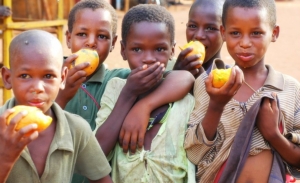The Child Nutrition Fund
 According to UNICEF’s 2024 Child Nutrition Report, “Child Food Poverty: Nutrition Deprivation in Early Childhood,” one in four children, approximately 181 million children under 5 years of age globally, are living in severe early child food poverty. Malnutrition and child wasting, which are highly prevalent, are life-threatening. The Child Nutrition Fund (CNF) is actively involved in addressing these ongoing issues.
According to UNICEF’s 2024 Child Nutrition Report, “Child Food Poverty: Nutrition Deprivation in Early Childhood,” one in four children, approximately 181 million children under 5 years of age globally, are living in severe early child food poverty. Malnutrition and child wasting, which are highly prevalent, are life-threatening. The Child Nutrition Fund (CNF) is actively involved in addressing these ongoing issues.
Launch of the Child Nutrition Fund
UNICEF launched the CNF as one of its initiatives. The CNF, led by UNICEF, serves as a financing mechanism to address malnutrition in children and women sustainably through policies, programs, practices and supplies. It has brought together countries, donors, partners and civil society organizations to collaborate on this critical issue.
CNF Governance Structure
The governance structure of the CNF was formally established in Nov. 2023 with three distinct members: financial partners, government partners and operational partners. Financial partners contribute to the cause by donating financial resources and participating in a funding agreement with the CNF(via UNICEF). Government partners are national governments collaborating with the CNF to access its funds for child nutrition issues through partnership agreements. Operational partners are nonstate entities that implement child nutrition programs using funds from the CNF and operational partners’ agreements with UNICEF.
Strategic Actions and Goals
The CNF is actively supporting 23 countries that are implementing operational plans under the United Nations Secretary-General’s Global Action Plan on Child Wasting. These countries are taking steps that include promoting breastfeeding during the first two years of life, enhancing nutritious complementary food with micronutrient powders, monitoring weight gain and providing nutrition counseling, using mid-upper arm circumference (MUAC) measurements and ready-to-use therapeutic foods (RUTF) for early detection of child wasting and distributing food supplements. The Global Action Plan on Child Wasting sets a goal to reduce wasting, which is low weight-for-height, to less than 5% by 2025 and less than 3% by 2030.
Impact and Future Goals of the CNF
Despite the fact that the history of the CNF is short, with this structure and vision, the CNF has been making a meaningful contribution to child nutrition. The CNF has funded $25 million in country programs in Kenya, Malawi, Pakistan and the Philippines. These funds work towards the prevention, detection and treatment of child wasting. In addition, partnerships are formed for many projects including a $30 million project with Gavi in Ethiopia. Additionally, the CNF has matched $15 million in domestic resources in 14 countries. The CNF also increased access to RUTF by providing funding to RUTF suppliers. Between its launch in Dec. 2022 and 30 Sept. 2023, the RUTF Advance Payment Facility has financed $89 million to RUTF suppliers, which resulted in more than 4.8 million cartons of RUTF available to children in need. RUTF is useful in treating waste because of its high nutrition and digestibility.
The history of the CNF demonstrates its lasting impact on improving children’s lives and their health. By 2025, the CNF expects to expand its reach to 33 countries. The CNF will continue to work to end child wasting and malnourishment with a current goal of impacting 368,116,890 children and women.
– Sein Kim
Sein is based in Bellevue, WA, USA and focuses on Good News and Global Health for The Borgen Project.
Photo: Flickr
